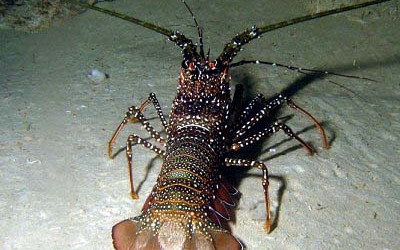The Lobster War

Admiralty and maritime law is a complicated field, one which is still emerging. In 1984 — hardly a long time ago — representatives from around the world gathered in Jamaica to draft the most recent version of the United Nations Convention on the Law of the Sea (UNCLOS), a very complicated set of international agreements which aim to settle some issues around maritime rights. UNCLOS went into effect in 1992 and there are now 168 nations which are a party to the agreement.
But in the early 1960s, UNCLOS was not yet in effect. Ambiguity was the norm, and because of that, France and Brazil almost went to war.
Over lobster — and, specifically, about how they move around in the ocean.
Let’s start with the obvious: if you’re a fisherman and you can grab a bunch of lobster, you’re probably making a nice profit. The trick, therefore, is to find a patch of ocean with lots of lobster. In 1961, French fisherman found some success in the Atlantic off the coast of Mauritania, but many sought better waters. The coastal areas of Brazil seemed like a good opportunity. Lobsters were plentiful there and easily accessible, and at shallow depths. A few French ships came in and set up shop.
Brazilian fishermen noticed and asked the Brazilian navy to investigate. At the time, Brazil claimed exclusive rights to sea creatures walking along the continental shelf within a certain radius of its coast — a claim that France respected peacefully. However, Brazil’s territorial claims over fishing areas did not extend as far as those continental shelf claims. The lobsters in question were in that middle region — far enough off Brazil’s coast for the French to fish for, had lobsters been fish, but not so far as to permit the French from grabbing lobsters which walked across the ocean floor.
The problem: the French claimed that the lobsters were swimming, not crawling — and therefore, open to anyone. The Brazilians, on the other hand, asserted that the lobsters weren’t swimming at all. Instead, Brazil stated, the lobsters were walking on the continental shelf, and therefore, exclusively available to Brazilian fisherman.
Unfortunately for all involved, at the time, there wasn’t a well-established third-party to resolve this disagreement. And to make matters worse, things got hostile — and fast. When Brazil demanded that the French fishing boats leave the area, they declined. Instead, as Wikipedia summarizes, “the French [ . . . ] radioed a message asking for the French government to send a destroyer to accompany the lobster boats.” Brazil responded by mobilizing a handful of naval warships, including an aircraft carrier. Both sides were at the ready to take the first step into battle.
The two sides attempted to resolve the issue at the negotiating table but that proved fruitless. Per the Brazilian Instituto de João Goulart (via Google Translate and cleaned up a bit), “France defended the thesis that the lobster was caught when it was swimming, that is, without contact with the submarine floor (which was considered Brazilian territory). At the moment that the lobster was no longer in contact with the continental shelf, France argued, the lobster could be considered a fish. Then Brazil’s Admiral Paulo Moreira took the floor. He argued that for Brazil to accept the French scientific thesis that lobster could be considered a fish when it jumps, Brazil would also have to conclude that when a kangaroo would be considered a bird when it hops.”
Unable to come to terms, the two nations spent the next two years on the brink of war. Again, over lobster.
Thankfully, the drafting of UNCLOS was underway, and it became clear that, under UNCLOS, Brazil would be able to claim control over the continental shelf — fish and lobster alike — extending 200 nautical miles off its shore. A claim extending that far would moot the French claim, so Brazil unilaterally did so. Perhaps as an olive branch, Brazil gave a couple-dozen French ships license to fish in Brazilian waters, provided that the French shared some profits with Brazilian fisherman. The two sides agreed to the terms in 1964 — and no shots were ever fired.
Bonus fact: France, located in Europe, and Brazil, located in South America, share a border. That’s because of French Guiana, which sits on Brazil’s northern border and on the Atlantic coast. French Guiana has been an overseas territory of France since 1946. Its citizens have representatives in the French Senate and National Assembly; its currency is the Euro; and French Guiana is part of the European Union.
From the Archives: The Aptly-Named Snake Island: It’s Brazil’s island. There are no lobsters there. Or people. Because of the snakes.
